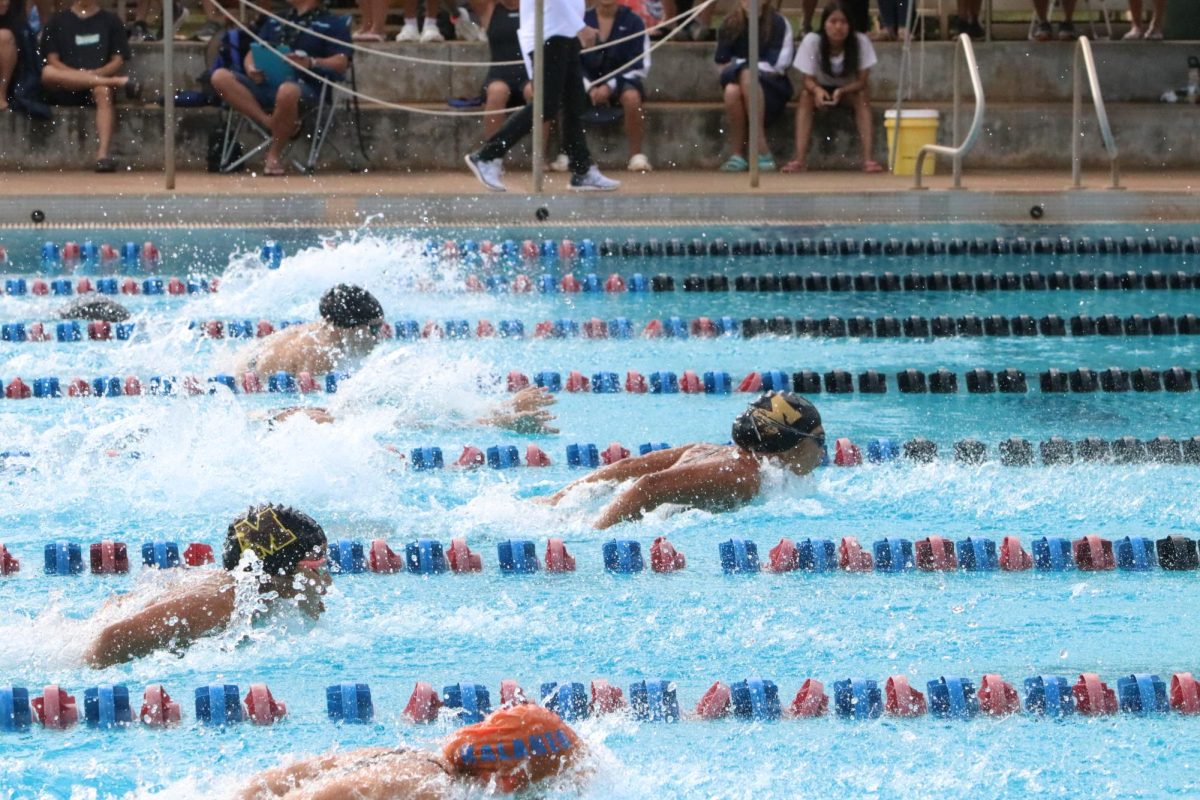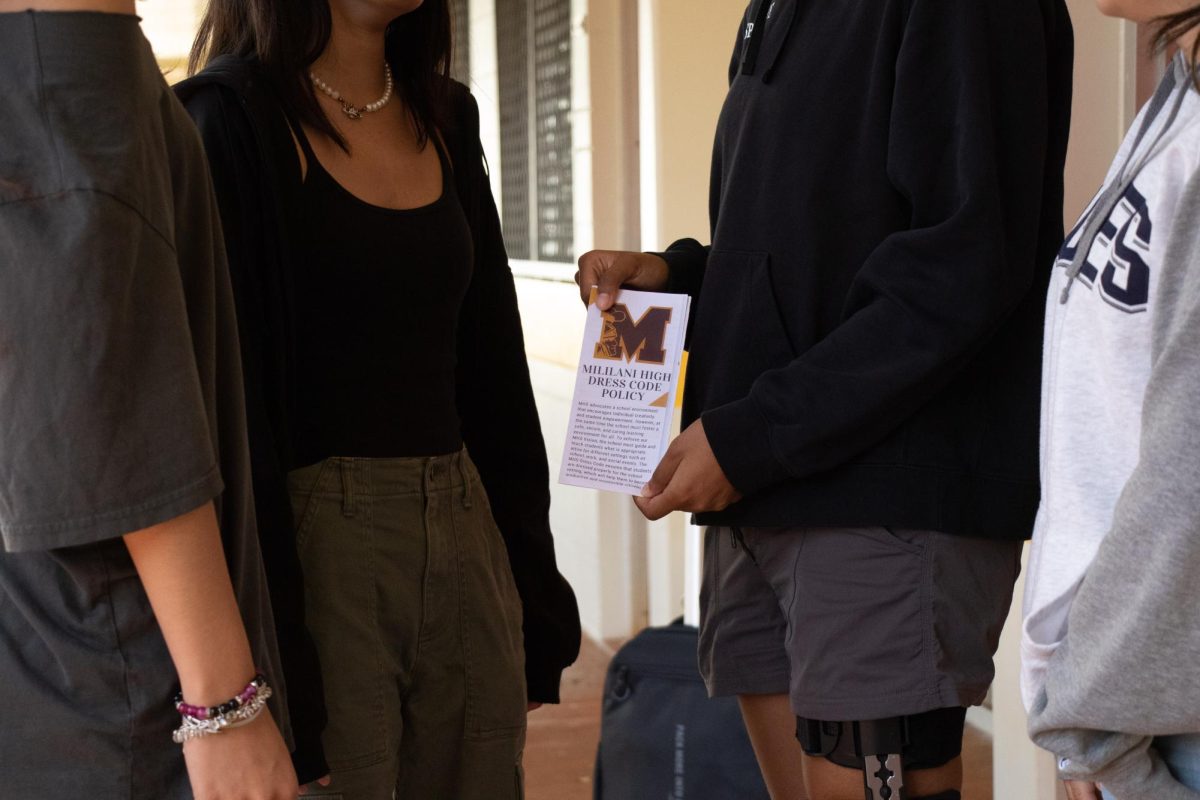MHS Blood Drive Struggles to Meet Goals, Needs New Donors
March 9, 2020
Hospitals rely on the Blood Bank of Hawai‘i to supply blood on their shelves on a daily basis. With teenagers contributing to about 10 percent of national blood donations, high schools remain a vital source. However, this school year, the last two blood drives at MHS failed to meet their goal of 100 pints, with the first one reaching 97 pints and the second 83 pints.
“I think one of the biggest factors in the change (of donations this year) is that the Blood Bank of Hawai‘i increased our goal because of our school size, without considering the reasons why students choose to donate or not,” said Blood Drive Adviser Stephanie Grande-Misaki, who has been the adviser at MHS since 2011.
Despite 100 appointments being made, a high number of deferrals made many donors ineligible to donate. With age, the chances of deferrals increase because of illnesses and medication. Such issues are less common for younger donors, which is why high school blood drives are so important; high school students have a lower risk of deferral compared to adults, and donating blood early encourages students to become lifelong donors in the future.
“High schoolers should understand that we are major providers of blood. There’s a couple thousand students in our school — even if more than half the people don’t meet the requirements, we can still save so many lives if everyone participated,” said Junior Andrew Kim, a member of the Blood Drive Committee.
Young donors are deferred for different reasons. Not eating a proper meal, having low or high temperature or catching a cold can all contribute to the number of donations falling short of the appointments made.
“So another part of the issue is preparation. Letting people know what to prepare for, getting their iron to the correct amount, that’s one of the main issues,” said blood drive Senior Chairperson Phoebe Kwan.
Being deferred once is not the same as being deferred for life, however. After her mother was deferred for life due to cancer, Grande-Misaki made it a mission to donate in her honor, starting in her senior year at MHS. Since then, she has been donating blood for the last 30 years.
“I have also been deferred from time to time, so I know that there are things beyond our control, but my hope is that one deferral doesn’t discourage others to stop donating,” said Grande-Misaki.
The next blood drive, on April 14, will be the last chance to donate this year. The MHS Blood Drive is optimistic about participation.
“It doesn’t bother me so much that we don’t make the goals, because if we collected 90 instead of a 100, we are still saving 270 lives. I (would) rather look at the positive than negative,” said Grande-Misaki.
Students who meet the height and weight requirements are encouraged to donate. Males 16 to 18 years old must be at least 5’ tall and weigh at least 110 pounds. Females between 16 and 18 years old have different weight requirements based on height, which can be found in the chart on a blood drive form. Donors should also eat a hearty meal before their appointment to prevent deferrals and eat iron-rich foods like red meat, spinach and whole wheat. Those who are interested or have questions can see Grande-Misaki in N102.



